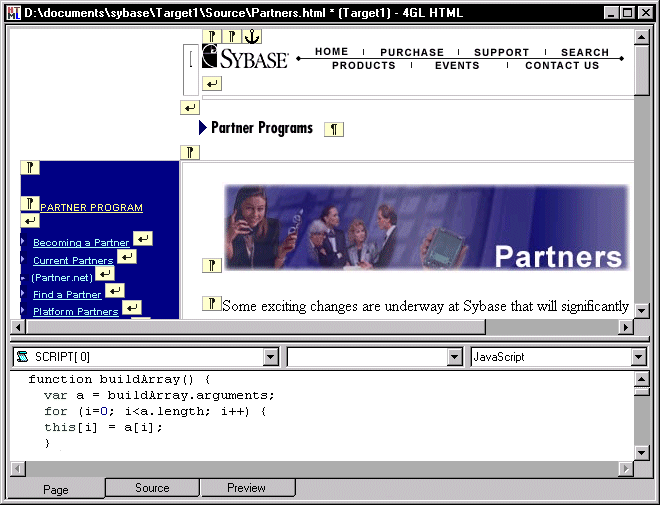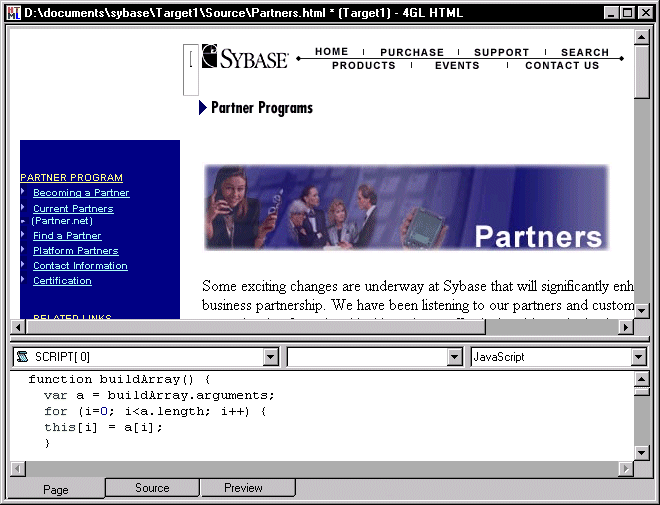Page view provides WYSIWYG editing for an HTML page without requiring knowledge of HTML tagging. Use Page view as your main editing environment or to supplement the editing you do in Source view.
![]() Hiding page view
You can hide page view by selecting Design>Options and clearing
the Show Page View check box. To see the change, close the HTML
editor and then open it again.
Hiding page view
You can hide page view by selecting Design>Options and clearing
the Show Page View check box. To see the change, close the HTML
editor and then open it again.
Although Page view provides WYSIWYG editing, you can show HTML tags on your page through a toggle switch in the PowerBuilder Design menu or in the Page view pop-up menu. The tags display in symbol form inside yellow blocks. This image shows a page in Page view with the Show Non-Visual Tags menu item selected.

Part of a client-side script is displayed in the integrated Script editor at the bottom of Page view. For more information about the Script editor, see Chapter 6, “Writing Scripts.”
The same page looks like this when the Show Non-Visual Tags item is not selected:

In Page view, you can also see FORM elements around controls that you insert on a non-4GL page. You can see icons for client and server scripts that you add to the page, and on JSP pages, you can see icons for JSP directives and custom tag library classes that you add to a page. These elements and icons remain visible in Page view even after you clear the Show Non-Visual Tags item, but they are not visible in the Preview view.
The basic document structure (HTML, HEAD, and BODY elements) is supplied when the page is first created. The editor creates the structure for you. Any text you type in Page view is inserted in the Body section of the HTML or JSP document.
The HEAD element includes a document title and can include links to external style sheets.
For more information on adding a page title from Page view, see “Giving your page a title”. For information on style sheets, see Chapter 4, “Working with Style Sheets and Framesets.” For information on other basic editing techniques, see “Basic editing in Page and Source views”.